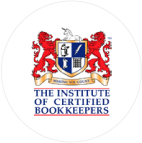
VAT or value added tax is a tax based on the value of goods or services. VAT is charged when a VAT registered business sells goods or services to another business, or to a non-business customer.
VAT can be shown on top of a price if it’s a business-to-business sale and will be shown within the price if it’s a direct or consumer sale.
For example—a business sells a mobile phone direct to a consumer, the price is £120. If the rate of VAT is 20%, then the VAT included on this transaction will be £20. When a business charges VAT on a sale, they’re collecting that money on behalf of HM Revenue & Customs.
If a business is VAT registered, they can reclaim the VAT they’ve paid on purchases. The difference between what they’ve charged on sales and what they’ve paid on purchases must be sent to HM Revenue & Customs. If this is a negative figure, then it means they’ve more to reclaim then they’ve charged, and HM Revenue & Customs will send the business the amount due.
Any business selling VATable products or services can become VAT registered. However, businesses with a turnover above the VAT threshold will be required by law to register. Once VAT registered, a business will need to charge VAT at the applicable rate on all VATable sales to UK customers.
VAT must be charged on sales to EU based customers without a valid VAT number, and will not be charged on sales to EU customers with a valid VAT number. If a business sells to any other country, VAT must not be charged.
To get more information about this, please contact us using the details shown on screen.

Clear Books, accredited by The Institute of Certified Bookkeepers and registered with the Financial Conduct Authority (reg. no. 843585), delivers valued, comprehensive online accounting software for small businesses in the UK.